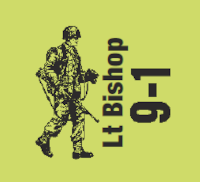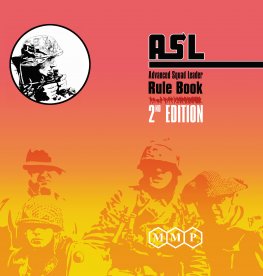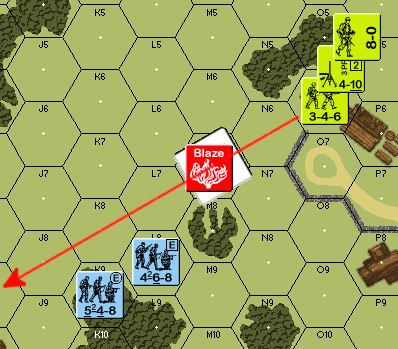
This article stems from a discussion taking place on social media. The roots of the original post sought clarity on a different topic but the discussion drifted into Fire Lanes. The topic drift led to an interesting discussion and a confounding rule which is seemingly at odds with existing Q&A and other rules. I took some time to do research and reach out to fellow players to see their thoughts on the subject. The good news is I wasn’t alone in my thinking. The bad news is my thinking wasn’t up to scratch. What follows is my journey to discovery.
Where The Confusion Starts

Rule B25.2 says in part “The SMOKE Hindrance DRM replaces the normal Wreck Hindrance DRM (D9.4) except in the case of an already established Fire Lane (A9.22), or in Heavy Winds (25.63), where only the Wreck Hindrance DRM would apply.” This is an interesting rule mostly because replacing a Wreck Hindrance with a SMOKE Hindrance is replacing a “hard” Hindrance with a “soft” Hindrance.
Rule A9.222 encapsulates this “hard” v. “soft” Hindrance. Any Hindrance removes the First Fire Movement in the Open (FFMO) DRM of a Fire Lane. The difference is that “soft” Hindrances do not otherwise apply. If your unit uses Non Assault Movement (NAM) through an Open Ground hex containing a Fire Lane, your unit takes a -1 DRM for using NAM. If a “hard” Hindrance applies, then that not only negates FFMO, but it also applies the +1 DRM. Now looking back at B25.2, replacing the “normal” Wreck Hindrance DRM with a SMOKE DRM is the difference between a -1 DRM and a zero DRM.
Sorting It Out
So looking back at B25.2, the normal Wreck DRM occasionally applies. The one concerning Heavy Winds is pretty straightforward and not applicable to this discussion. What about that “already established Fire Lane” clause? How does that apply?
My initial thinking was it applied only to a Blazing Wreck occurring AFTER placement of the Fire Lane. This was a very narrow instance and would mean a “hard” Hindrance would rarely happen. Rarely would a Blazing Wreck occur along an established Fire Lane. And since the AFV would have to be along that Fire Lane when placing the Fire Lane, continuing to apply that “hard” Hindrance made sense. But this isn’t the intention of B25.2 and is the root of my mistaken understanding.
The Intention

Refer to the example. The 4-6-8 moves into L7 using NAM and the American player attacks the 4-6-8 and places a Fire Lane along the red arrow. The initial attack is a 4+1 (- 1 FFNAM, +2 SMOKE). As noted in B25.2, the SMOKE DRM replaces the Wreck Hindrance. I think very few players get this wrong.
Now the 5-4-8 moves into K8 using NAM. Here, this is an “already established” Fire Lane. Now the Exception for replacing the Wreck Hindrance with the SMOKE TEM kicks in. What I initially thought was a -1 DRM (SMOKE is NA to a Fire Lane attack) is in reality a flat shot (FFNAM, +1 Wreck Hindrance). Q&A1 and D10.32 bolsters this conclusion. Think about it this way removes all doubt and make the intent clear. Also note per the Q&A, if the Wreck is subjected to a hypothetical Case J, the “hard” Hindrance wouldn’t apply so the attack would revert back to the SMOKE DRM.
Conclusion

Even the best players make mistakes. Even the best blog writers get the rules wrong. In my defense, I think an example would have made this abundantly clear. It wasn’t until I spoke out loud with a 5th person on this topic that the penny dropped for me. What I thought “already established” meant and what the rule was trying to convey were at odds. It was tough for me to get past what I was thinking because most people I was speaking with thought the same way.
This further reinforces the concept of “playing broadly”. Because I could speak with so many people about what I saw as a disagreement between the rules and a Q&A I could eventually reach a person who had the right read on it. Playing widely has given me an extended reach into the ASL community and my understanding benefits because of that. Through this article, I share that benefit with you all. Have a great week everyone.
A. The wreck Hindrance applies normally (e.g., if it is not considered moving).


The example completely clears things up. Thanks for posting this!
This is an interesting article. Thank you Jim for writing it.
This discussion of ‘established’ fire lanes begs the question of what would constitute an un-established fire lane? The only clear example I can see is further down in A9.222 where it says, “When a Fire Lane is placed due to a First Fire attack vs a unit using some form of Impulse movement (…), its Fire Lane Residual FP immediately attacks all other elements of that Impulse currently in any Location(s) where that Residual FP now exists.” (As an aside, I was kind of stunned on learning this – it would have made my solo play through of ASL67 Cibik’s Ridge very different! I might have to play through that one again.) So this would include platoon movement of AFV with exposed PRC (though this seems a little unlikely since riders are mostly allowed later in the war when most tanks had radios by that time), a convoy of unarmored vehicles (like Hube’s Pocket – one of my favorites), Human Wave/Banzai, or the sort of scenario-specific marching in column a la the aforementioned Cibik’s Ridge. Are there other examples of attacks by an un-established fire lane that I’m not seeing?
This sort of defensive fire will likely become part of my toolbox now whenever I see an opportunity.
Thanks again for the article!